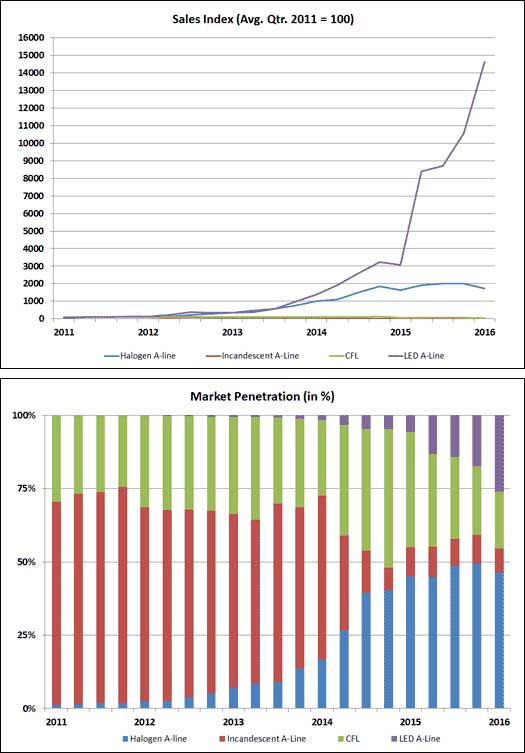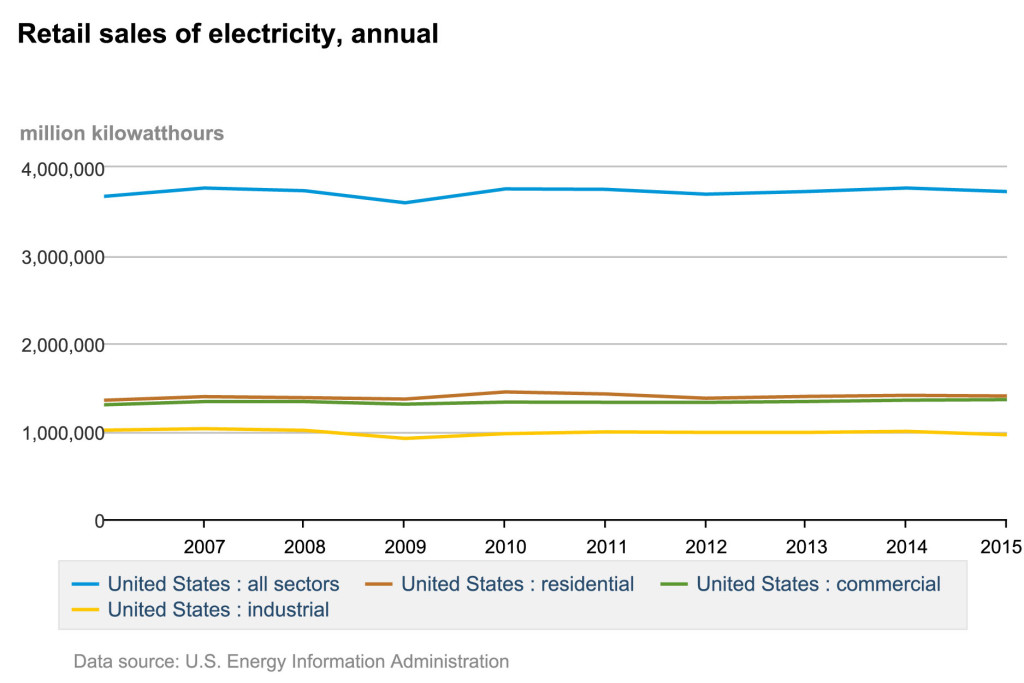I don’t normally write short pieces—it’s bad for the search algorithms and such—but I couldn’t resist with a May 16 press release from the National Electrical Manufacturers Association, which demonstrates in just two paragraphs and accompanying graphics how completely (and quickly) the lighting market is changing in the United States.
According to NEMA, sales of so-called A-line LED lamps (the screw-in kind that dominate the residential lighting market) soared 375.9 percent in the first quarter of 2016 compared to a year earlier—topping 25 percent of sales for the first time. Just five years ago (as is clear in the graphics below), LED A-line lamps essentially had zero market share while incandescent bulbs still accounted for more than 70 percent of all residential lighting sales (a figure that has plummeted to just over 8 percent currently).
Source: NEMA
Commenting on the association’s findings, Kevin Cosgriff, NEMA president and CEO, said, “The speed with which prices for common LED bulbs have declined and the corresponding consumer acceptance of this technology have exceeded manufacturers’ expectations.” If you ask me, this would have been the perfect time, perhaps the only time, to say that this is change (I have to say it) at the speed of light.
Cosgriff added that based on current trends, NEMA expects LEDs “to replace most general-service CFL and halogen bulbs in the coming years.”
If that holds true, there is a lot of growth on the near-term horizon. In its last report on the market (a 2015 study tracking LED sales through 2014, which can be found here) DOE reported that there were approximately 3.27 billion A-type lamps installed throughout the U.S.; of this total, just 77.7 million were LEDs. DOE pegged savings in 2014 from the installed LEDs at 17.6 trillion British thermal units, and estimated that if all the A-type lamps in the U.S. were converted to LEDs it could save 525 trillion Btus, or 51 terrawatt-hours (twh) of site electricity each year.
LED sales may not continue their torrid recent pace, but there is no doubt that the long-term savings from these and other more efficient lighting options are going to be substantial. In the early version of its 2016 Annual Energy Outlook released this week (more on that in a subsequent post, but the document can be found here), DOE estimates that residential lighting demand will drop from just under 147 billion kwh in 2015 to roughly 88 billion kwh in 20301—a 40 percent decline even though it expects the number of households in the U.S. to climb from 115 million to 131 million during the same period.
Perhaps it is time to invest in a portfolio of LED manufacturers.
–Dennis Wamsted
1DOE estimates consumption in quads (quadrillion Btus), the conversion to kilowatt-hours was done here.

 Follow
Follow